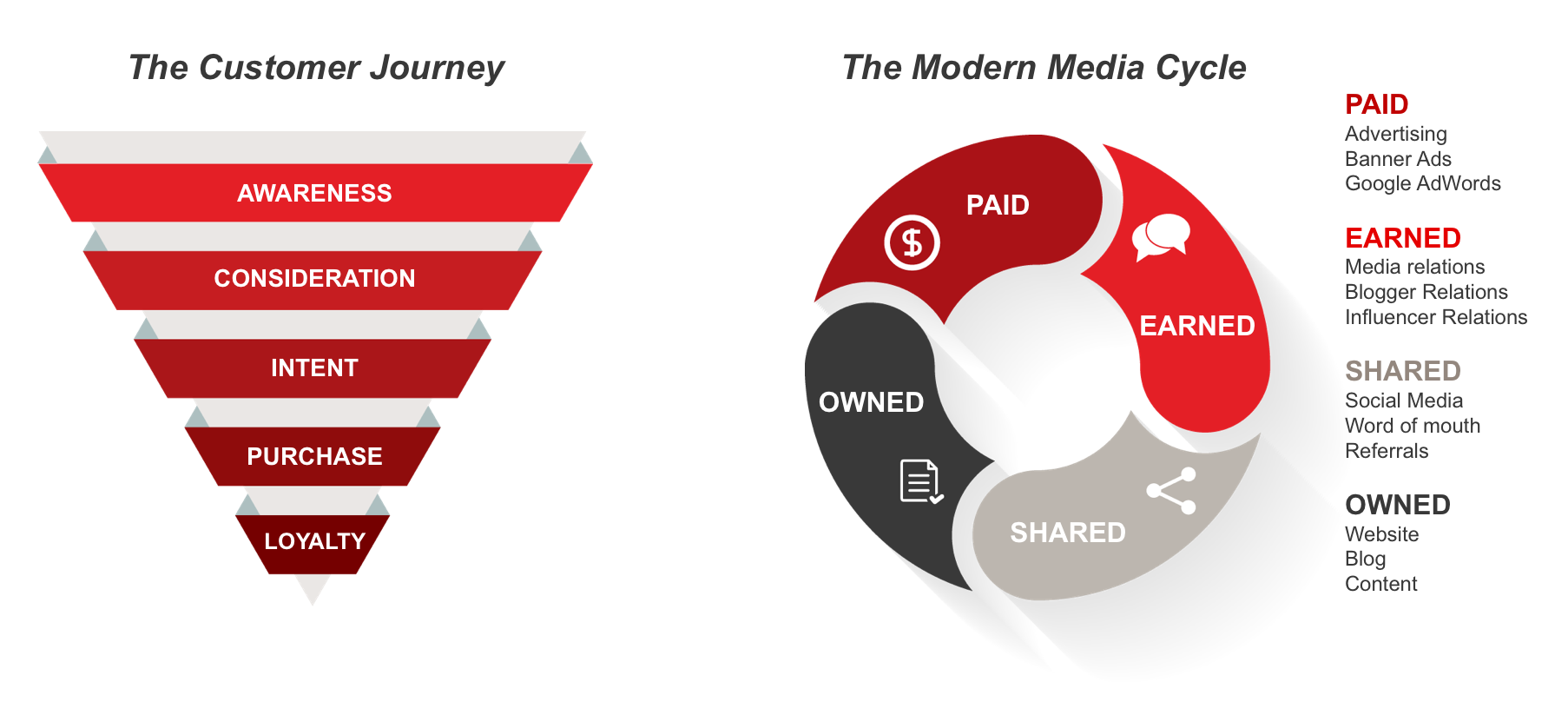Here’s Why Media Relations-Only Mode Doesn’t Work Anymore—and What the New PR Media Landscape Looks Like
It wasn’t so long ago that public relations (PR) was primarily associated with earned media.
Think: PR pros working the phones to pitch story ideas to newsrooms crowded with reporters and editors. Coveted spreads and stories in glossy magazines and hefty daily newspapers.
Fast forward to the present, and the landscape is much broader.
Now, effective PR programs utilize paid, earned, shared and owned media to drive measurable results at all stages in the marketing funnel—from awareness and consideration to intent, purchase and loyalty.
The industry calls this new media model PESO for short.
Let’s be clear: Earned media still exists, and its ability to build awareness and influence perception—those key pieces at the top of the marketing funnel—is still very much alive. But—and this is a big “but”—earned media is only one piece of today’s larger media mix.
PR professionals and brands alike who embrace PESO are driving marketing metrics like awareness, lead generation, conversions and recommendations.
Those who are stuck in “media relations only” mode? They’re likely reporting impressions and hoping that people took some type of action after reading that media story. (BTW, “hope” is not a metric we recommend measuring. We do, however, have tips for rethinking earned media measurement.)
Before we dive in for a closer look, I want to offer a quick clarification: The PESO model is specific to PR communications. That means, for example, when we talk about things like paid media, we’re not referring to the big media budgets that advertising folks use to buy TV spots and billboards. Rather, we’re referring to paid efforts that make sense as part of an integrated PR strategy.
OK, let’s dig into this model and how to make it work for your brand or organization.
The PESO Media Model
PAID MEDIA
- What it is: Social advertising, sponsored content on media sites and blogs, paid influencer partnerships and paid content discovery using platforms like Taboola and Outbrain
- What you can measure: Website visits, downloads of gated content, leads generated and conversions
EARNED MEDIA
- What it is: What we used to think of as “traditional media” now includes journalists, bloggers, influencers and customers—anyone who talks about a brand or business organically
- What you can measure: Impressions and unique monthly visitors (UMV) are common metrics for media and blogs, while website traffic may make sense for online reviews and mentions
SHARED MEDIA
- What it is: Social media—specifically, the social channels themselves (Facebook, Instagram, LinkedIn), not the content shared on these channels. Shared media relies heavily on your owned media strategy because this informs what a brand shares on its social channels
- What you can measure: For starters, reach, impressions, engagement, clicks and video views
OWNED MEDIA
- What it is: Online properties including company websites and blogs, as well as content that a brand owns like webinars, videos, podcasts, ebooks and user-generated content of which the brand has usage rights
- What you can measure: Website traffic, webpage visits, downloads and views—among other metrics, depending on the content and distribution channels
There’s a lot of overlap in this model. When developing a PR strategy, don’t get carried away with “checking the box” for each media type; rather, think about how your program will effectively integrate elements of each.
For example, if you’re activating an online influencer program, think about how to incorporate this influencer content in your social and paid efforts. Or, if you’re developing a whitepaper to hook new leads, identify how this content can live across channels, why media might care and how paid support can further boost leads.
Ready to rethink your PR strategy with PESO? We can help. Approach us anytime at hello@approachmarketing.com.


